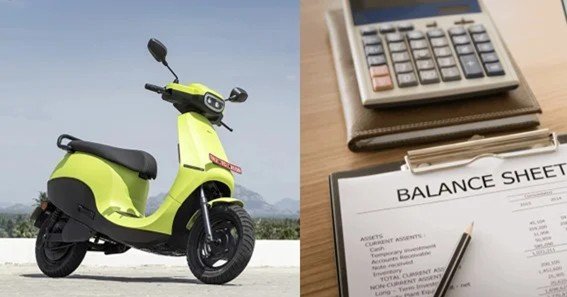Ola Electric, a leading player in India’s electric vehicle (EV) sector, has been at the forefront of the nation’s push toward sustainable mobility. However, as the company prepares for its IPO, investors are keenly examining its financial health to assess whether it’s a sound investment. Here’s a breakdown of Ola Electric’s balance sheet to determine if they are financially strong.
Analyzing Ola Electric’s Balance Sheet
1. Assets vs. Liabilities
As of 2024, Ola Electric’s total assets amount to approximately ₹77.4 billion, while its total liabilities stand at ₹57.2 billion. This indicates that the company’s assets exceed its liabilities by a margin, which is a positive sign. However, the high level of liabilities also reflects the company’s significant borrowing to fuel its aggressive expansion.
2. Debt-to-Equity Ratio
Ola Electric’s debt-to-equity ratio is currently at 134.2%, which is considered high. This means the company has taken on a substantial amount of debt relative to its equity. High leverage can be risky, especially for companies in capital-intensive industries like EV manufacturing. However, it also reflects the company’s strategy to rapidly scale its operations.
3. Cash Reserves
The company has cash reserves of approximately ₹7.97 billion. While this may seem substantial, it’s important to note that given the company’s current burn rate, it has less than a year of cash runway based on free cash flow. This could potentially be a concern if the company doesn’t achieve profitability soon or fails to secure additional funding.
4. Profitability and Revenue
Ola Electric reported a revenue of ₹5,009 crore for FY24, a significant increase reflecting its growing market presence. However, the company is still operating at a loss, with a negative EBITDA of ₹1,040 crore. This ongoing loss highlights the challenges Ola faces in balancing growth with profitability, a critical factor that investors need to consider.
Financial Strength: The Verdict
Ola Electric’s balance sheet reveals a company that is heavily investing in its future, with substantial assets and a growing revenue base. However, the high debt levels and ongoing losses indicate financial vulnerabilities. The company’s ability to manage its debt, extend its cash runway, and move towards profitability will be key determinants of its long-term financial strength.
FAQ
What is Ola Electric’s current debt situation?
Ola Electric has a high debt-to-equity ratio of 134.2%, reflecting substantial borrowing to fund its rapid expansion.
How much cash does Ola Electric have?
Ola Electric has cash reserves of approximately ₹7.97 billion, but it has less than a year of cash runway based on current free cash flow.
Is Ola Electric profitable?
No, Ola Electric is currently operating at a loss, with a negative EBITDA of ₹1,040 crore as of FY24.
What are Ola Electric’s total assets and liabilities?
The company has total assets of ₹77.4 billion and total liabilities of ₹57.2 billion.
Should investors be concerned about Ola Electric’s financial health?
While Ola Electric is growing rapidly, its high debt levels and ongoing losses are concerns. Investors should closely monitor the company’s progress towards profitability and its ability to manage its debt.
Disclaimer: This article is for informational purposes only and should not be taken as financial advice. Always consult a financial advisor for investment decisions.










